Chocolate
-


Bensdorp 22/24 DP Cocoa Powder
Bensdorp
$17.99Bensdorp 22/24 Fat Dutched Cocoa Powder - High Fat Premium Unsweetened Baking CocoaBensdorp Brand Dutch-Processed Unsweetened CocoaHigh Fat - Contains 22 to 24% Cocoa Butter for Rich, Deep TasteAdds Deep Chocolate Flavor to Baked Goods, Chocolates, Ice...$17.99 -


Blommer Jet Black Cocoa Powder
Blommer
$17.99Jet Black Cocoa Powder for Baking, Cooking & DecoratingDutch Processed, Alkalized Cocoa with Deep Black ColorMellow Chocolate FlavorUse Alone or Combine with Other Cocoa Powders to Deepen ColoringKosher Certified, Gluten Free Blommer jet black cocoa...$17.99 -

Black Cocoa Powder 10/12
OliveNation
$15.99Black Dutch Cocoa Powder with 10/12 Cocoa Butter for Baking, Cooking & BeveragesHighly Alkalized through Dutch Process for Deep Black ColorLow Fat with Only 10 to 12% Cocoa ButterPerfect for Creating Eye-Catching, Delicious Baked GoodsNon-GMO, Gluten...$15.99 -


Chocolate Extract - PG Free
OliveNation
$10.99Chocolate Extract for Baking - Adds Deep Flavor & ColorMade from Water, Alcohol, Chocolate Concentrate & Vanilla ExtractDark Brown, Water Soluble Liquid FlavoringAdds Rich Fudgy Taste, Aroma, and Color to Baked Goods, Beverages, SaucesNon-GMO, Gluten...$10.99 -


Chocolate Almond Bark Kit
OliveNation
$21.99Milk Chocolate Almond Bark - Easy DIY Kit with Delicious Textures & FlavorsEverything Needed for DIY Milk Chocolate Bark with Chopped AlmondsEasy to Make, No-Bake Recipe - No Tempering RequiredClassic Flavor Combination of Creamy Milk Chocolate with...$21.99 -

Dark Chocolate Bark Kit
OliveNation
$42.99Strawberry Pistachio Dark Chocolate Bark - Easy & Delicious DIY CandyIncludes All Ingredients for Making Strawberry Pistachio Chocolate Bark CandyEasy to Follow, No-Bake Recipe with Delicious Combination of Flavors & TexturesBeautiful Finished Look with...$42.99 -


Peppermint Bark Kit
OliveNation
$21.99DIY Gourmet Peppermint Bark for Snacking, Desserts, or GiftingAll Ingredients for Homemade Dark Chocolate Peppermint BarkDelicious Combination of Creamy Chocolate with Crunchy PeppermintDark Compound Chocolate Melting Wafers - No Tempering...$21.99 -


Valrhona Dulcey Blond Crunchy Pearls
Valrhona
$19.99Valrhona Dulcey Blond Crunchy Pearls - Delicious Taste & Texture for Decoration & InclusionsCrispy Cereal Puffs Enrobed in Creamy 35% Blond ChocolateCouverture Coating with Unique Caramelized, Buttery FlavorPerfect for use in Decorating, Inclusions,...$19.99 -


Fudge Brownie Mix
OliveNation
$13.99Just Add Water Fudge Brownie Mix for Commercial, Foodservice, Home UseMade with Enriched Bleached Wheat Flour, Sugar, Egg Whites & Dutch Processed CocoaClassic Fudgy Flavor with Soft, Moist Inside & Crackled TopIdeal for Commercial, Home, Institutional,...$13.99 -


Brownie Base - Gluten Free
OliveNation
$18.99Gluten Free Brownie Premix for Specialty Diet Brownies, Brookies, BarsMade with Rice Flour and Dutch Processed CocoaWheat-Free for Celiac-Friendly Chocolatey, Fudgy TreatsIdeal for Commercial, Home, Institutional, Restaurant KitchensRequires Vegetable...$18.99 -


Brownie Mix - Vegan
OliveNation
$11.99Vegan Brownie Mix for Moist, Fudgy Baked TreatsPlant-Based Mix Made with Dutch Process Cocoa for Rich FlavorSimple Just-Add-Water Formulation for Easy PrepVegan-Friendly Treats with Delicious Fudgy Taste, Moist & Tender TextureIdeal for Commercial, Home,...$11.99 -


Butterscotch Baking Chips
OliveNation
$16.99Butterscotch Chips for Baking, Mixes, and SnackingButterscotch Flavored Chips for Use in Baked Goods & ToppingsRich, Sweet Taste and Toasty Color for Flavor and TextureMorsels Can be Used Whole, Chopped or Melted for Various Baking...$16.99 -
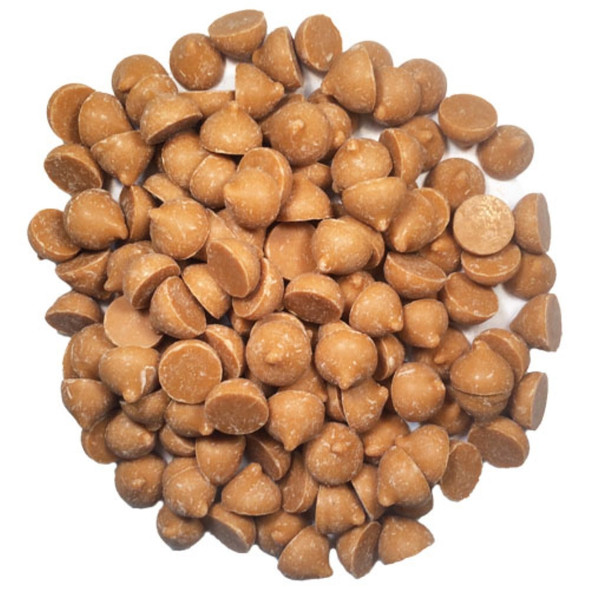

Butterscotch Mini Baking Chips
OliveNation
$11.99OliveNation Mini Butterscotch Baking Chips - 4M Size Bits for Baked Goods & MixesRich, Classic Butterscotch Flavor and Golden Brown ColorClassic Baking Bit Melts When Warm While Holding ShapePerfect for Brownies, Blondies, Cookies, Cheesecake &...$11.99 -

Cacao Nibs
OliveNation
$24.99Cocoa Nibs - 100% Pure Cacao for Cooking, Baking & DecoratingPure Cacao with Rich, Deep Chocolate Flavor & AromaTiny Bits with Crunchy Texture - Healthy, Natural Substitute for Chocolate ChipsGreat for Baking, Topping, Prepared Mixes, Trail Mix,...$24.99 -


Chocolate Cream Cake Mix - Vegan
OliveNation
$13.99Vegan Chocolate Cream Cake Mix for Plant-Based DessertsRequires Water & OilPlant-Based Formulation with Rich Chocolate FlavorPerfect for Suspending Fruit & InclusionsEasy to Customize at Scale for Commercial, Restaurant, Home, Institutional...$13.99 -


Chocolate Cake Mix - Vegan
OliveNation
$12.99Vegan Chocolate Cake & Cupcake Mix for Delicious Plant-Based DessertsSimple Prep Requires Only Water & Vegetable OilPlant-Based Mix made with Dutch Processed CocoaIdeal for Vegan-Friendly Baked Goods with Rich Chocolate TasteContains Wheat OliveNation...$12.99 -


Dark Chocolate Cream Cake Base
OliveNation
$11.99Dark Chocolate Cream Cake Base for Professional Quality Cakes, Cupcakes, Cake PopsRequires Water, Liquid Whole Egg, Vegetable OilDeep Chocolate Flavor with Moist & Tender CrumbConsistently Thick Batter Perfect for Suspending Fruit & InclusionsEasy to...$11.99 -


German Chocolate Cake Mix
OliveNation
$11.99German Chocolate Cake Mix for Professional Quality Cakes, Cupcakes, Cake Pops, CookiesSimple Prep Requires Only Water & OilMade with Dutch Processed Cocoa for Classic, Traditional FlavorMoist Texture Stands up to Decorating, Mix-Ins, InclusionsContains...$11.99 -
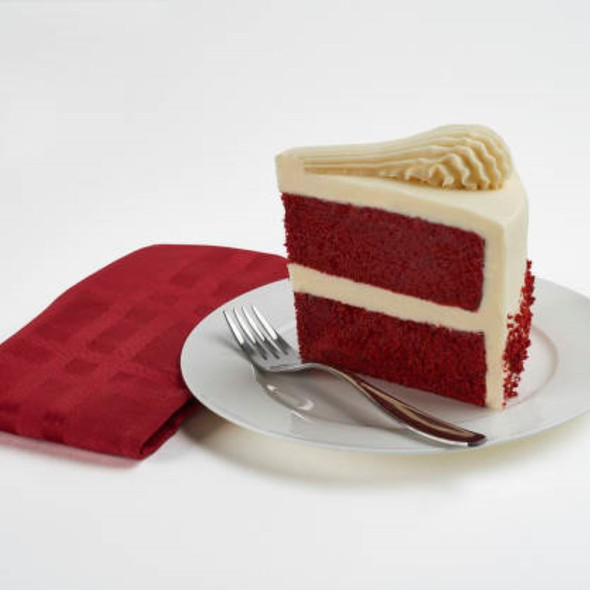

Red Velvet Cake Mix
OliveNation
$12.99Red Velvet Cake Mix for Colorful & Delicious Cakes, Cupcakes, Cake Pops, CookiesSimple Prep Requires Only Water & OilClassic Chocolatey Taste from Dutch Processed CocoaMoist Texture Stands up to Decorating, Mix-Ins, InclusionsContains Egg, Milk, Soy,...$12.99 -
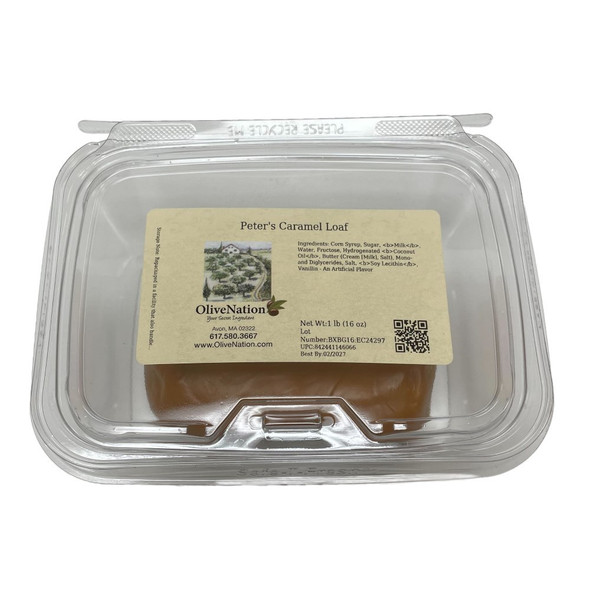

Peter's Caramel Loaf
$20.99Making caramel candies or candy apples? Introducing Peter's Caramel Loaf -- a premium ready-to-use caramel block.It features a soft texture and creamy taste and melts easily. You can use Peter's Caramel Loaf for a variety of confections...$20.99 -


Candy Coating Wafers, White Yogurt
OliveNation
$11.99Yogurt Coating Melts for Confectionery, Molding, Dipping, DrizzleCream-Colored Confectionery Covering MeltsMade using Real Yogurt for Sweet, Tangy Taste & Creamy TextureIdeal for Dipping or Enrobing Dried Fruits, Pretzels, Snacks, Bars, CandyNon-GMO,...$11.99 -
On Sale


Candy Melting Wafers, Light Green
OliveNation
Now: $8.99Was: $9.99Green Candy Coating Melts - Pastel Wafers for Coating, Dipping, Decoration, DrizzleConfectionery Compound Discs with Sweet Flavor and Creamy TextureBeautiful Pale Green Color for St. Patrick's Day, Easter, Christmas, Spring, Gender RevealsGlossy, Shiny...Now: $8.99Was: $9.99 -
On Sale


Candy Melting Wafers, Orchid Purple
OliveNation
Now: $8.99Was: $9.99Orchid Purple Coating Melts - Creamy No-Temper Coating, Dipping, Decoration, DrizzleCompound Chocolate Discs with Sweet Flavor and Creamy TextureColorful Delicate Purple Shade for Eye-Catching Edible DécorGlossy Finish Without Need for TemperingGreat for...Now: $8.99Was: $9.99 -
On Sale
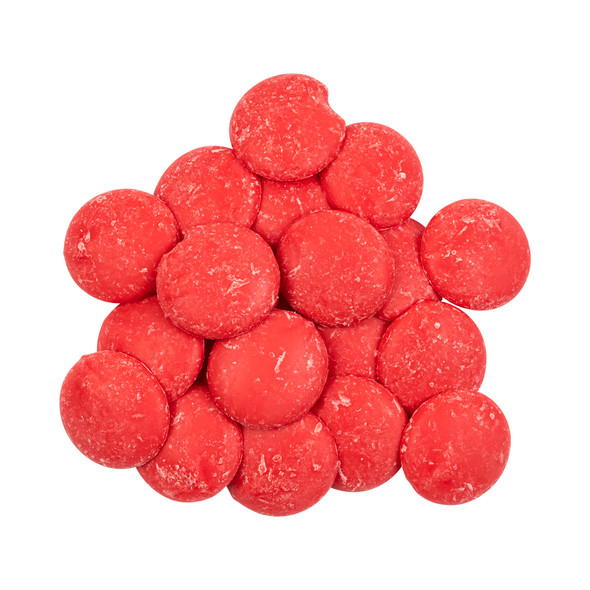

Candy Melting Wafers, Red
OliveNation
Now: $8.99Was: $9.99Red Candy Coating Melts - Coating, Dipping, Decoration, DrizzleCompound Chocolate Discs with Sweet Flavor and Creamy TextureBeautiful Red Color for Valentine's Day, Christmas, July 4th DecoratingGlossy, Shiny Finish Without Need for TemperingEasy To Melt...Now: $8.99Was: $9.99 -


Candy Melting Wafers, White
OliveNation
$11.99White Candy Melting Wafers - Coating, Dipping, Decoration, DrizzleConfectionery Coating Discs in Pure, Bright White ColorPerfect for Finishing Drizzle on Cakes, Cake Pops, Cupcakes, Confections, TrufflesGreat for Dipped Pretzels, Covered Oreos,...$11.99 -
On Sale
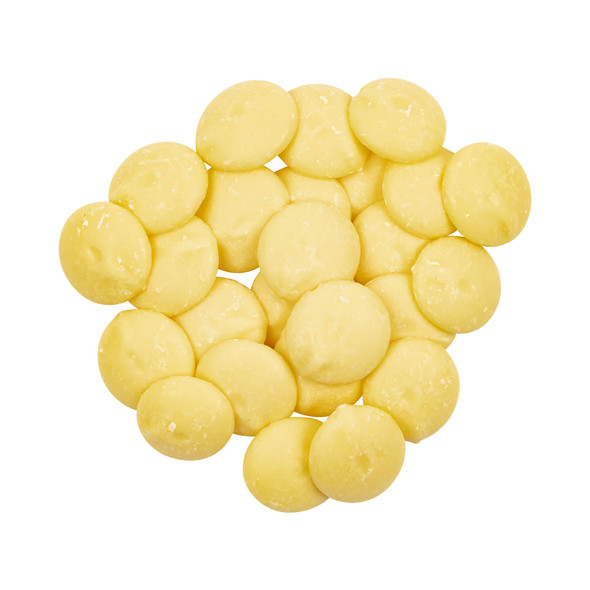

Candy Melting Wafers, Yellow
OliveNation
Now: $8.99Was: $9.99Yellow Candy Melts - Colorful Compound Coating, Dipping, Decoration, DrizzleBold Yellow Color for Themed Bakes, Holidays, Everyday TreatsPerfect for Finishing Drizzle on Cakes, Cake Pops, Cupcakes, Confections, TrufflesGreat for Dipped Pretzels, Covered...Now: $8.99Was: $9.99 -


Valentine Hearts Mini Candy Quins
OliveNation
$9.99Valentine Mini Heart Sprinkles - Mini Size Shaped Quins for Topping & DecoratingMiniature Heart-Shaped Flat Sprinkles for Cakes, Cupcakes, ConfectioneryBeautiful Mix of Red, White, and Pink ColorsIdeal for Decorating Baked Goods for Themed & Special...$9.99 -


Caramel Bits
OliveNation
$12.99Caramel Baking Bits – Small Round Sweet Morsels with Chewy Texture for Baking, Coating, CookingReal Caramel from Premium Quality Ingredients including Sugar, Butter, Non-Fat Milk PowderSmall Round Balls with Soft, Chewy Texture – Not StickyAdds Flavor &...$12.99 -
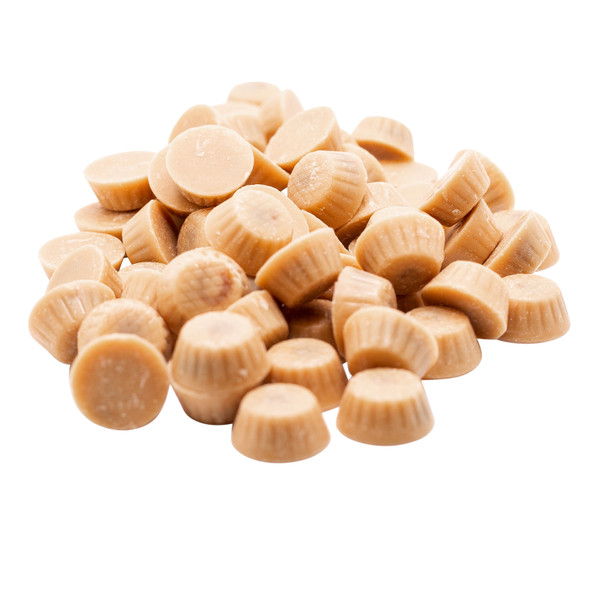

Gertrude Hawk Caramel Filled Caramel Mini Cups
Gertrude Hawk
$13.99Mini Caramel Cups - Double Caramel for Creamy Delicious TasteCaramel-Flavored White Chocolate Mini Cups filled with CaramelSweet & Creamy Twist on a Classic CandyEye-Catching Edible Decoration for Cakes, Cupcakes, ConfectioneryGreat Addition to Topping...$13.99 -

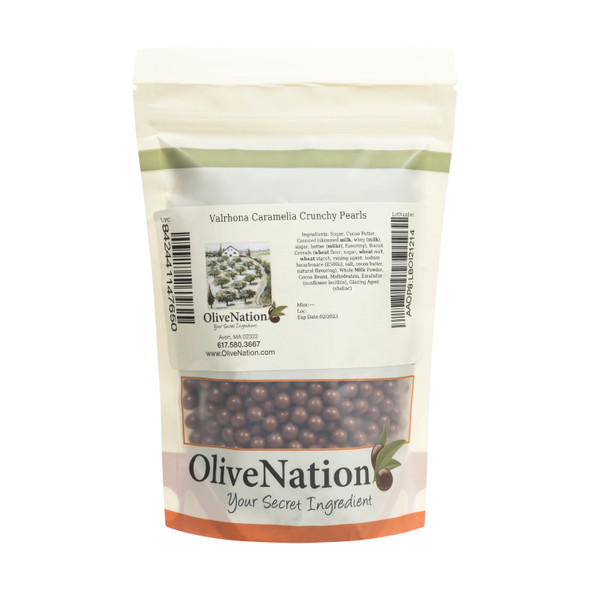
Valrhona Caramelia Crunchy Pearls
Valrhona
$18.99Valrhona Caramelia Crunchy Pearls - Crispy Caramel Milk Chocolate-Coated Edible DecorationsCrispy Cereal Puffs Coated in 36% Caramel Milk ChocolateElegant Look and Delicious TastePerfect for Adding Visual Interest & Texture to DessertsIdeal for...$18.99 -

Sweetened Carob Chips
OliveNation
$11.99Sweetened Carob Baking Chips for Cakes, Cookies, Topping, DecoratingMade from Carob Powder & Sweetened with SugarRich, Chocolate-Like Taste with Creamy MouthfeelPerfect for Baking, Topping, Decoration, Trail MixesNon-GMO, Gluten Free, Kosher,...$11.99 -


Unsweetened Carob Chips
OliveNation
$12.99Carob Chips - Great Tasting Chocolate Substitute for Baking & SnackingMade from Naturally Sweet Sugar Free Carob PowderDeep, Rich Taste Similar to Semi-Sweet ChocolatePerfect for Baking Cookies, Cakes, Topping, MeltingSugar Free, Non-GMO, Gluten Free,...$12.99 -

Carob Powder
OliveNation
$10.99Carob Powder - All-Natural Low Sugar, Low Fat Chocolate Substitute100% All-Natural Ground Carob Pods without SeedsRich, Earthy Chocolate-Like TasteGreat for Baking, Beverages, ConfectioneryNon-GMO, Gluten Free, Vegan OliveNation carob powder is made...$10.99 -


Chocolate Chip Mint Flavor Fountain
OliveNation
$12.99Chocolate Chip Mint Fountain Flavor by OliveNation is a concentrated flavoring that’s perfect for sherbet, sorbet, hard and soft-serve ice cream, smoothies, shakes, diet drinks and more. It adds gourmet taste to all of your homemade frozen...$12.99 -


Organic Chocolate Extract
OliveNation
$13.99Organic Chocolate Extract - Clean Label Flavoring for Baking & BeveragesMade from Certified Organic Alcohol, Cocoa Nibs, Vanilla Extract & WaterRich, Deep Chocolate Flavor, Aroma & ColorPerfect for Flavoring Cakes, Cookies, Brownies, Frosting, Fillings,...$13.99 -

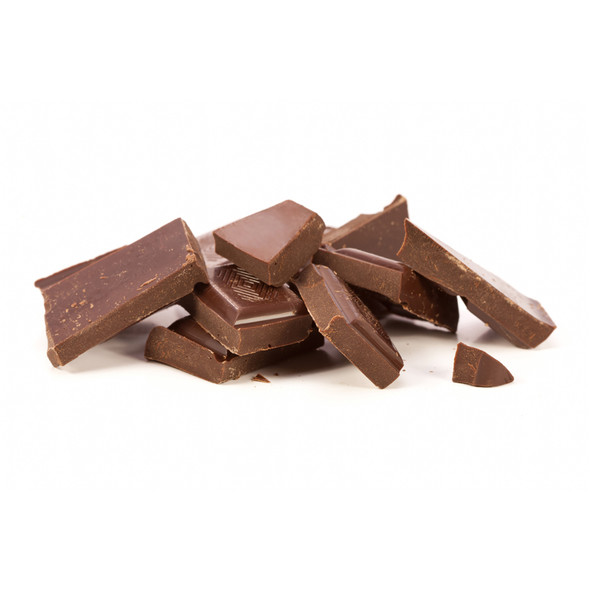
Chocolate Flavor - TTB
OliveNation
$19.99TTB Chocolate Flavoring - Sugar Free Water Soluble Baking & Beverage FlavorTTB-Approved Water Soluble Formula for Use in Commercial Brewing ApplicationsMade From Natural Flavors for Realistic Chocolate TasteUse to Create Flavored Beer, Wine, Seltzer,...$19.99 -


Chocolate Frosting Mix - Gluten Free, Vegan
OliveNation
$11.99Chocolate Buttercream Mix - Allergen Free with Vegan Prep OptionRich Chocolate Flavor & Color from Real CocoaTop-9 Allergen Free with Vegan Prep OptionIdeal for Frosting, Filling & Decorating Cakes, Cupcakes, Cookies, Brownies, BarsFree of the Top 9 Food...$11.99 -

Chocolate-Flavored Flakes
OliveNation
$20.99Chocolate Flavored Topping Flakes for Cakes, Confections, and DessertsFlaked Compound Chocolate with Rich Brown ColorCreate Elegant Edible Decorations on Cakes, Cupcakes, DessertsGreat for Ice Cream Topping Bars and Dessert BuffetsCoating or Sprinkle for...$20.99 -

Christmas Candy Bark Kit
OliveNation
$17.99Christmas Bark Candy - Easy DIY Colorful Holiday TreatAll Ingredients for Homemade Multicolored Chocolate BarkRed and Green Compound Chocolate with Creamy Flavor - No Tempering RequiredCreate Elegantly Decorated and/or Layered TreatsPerfect for Snacking,...$17.99 -


Cinnamon Baking Chips
OliveNation
$29.99Mini Cinnamon Chips - Baking, Edible Decoration, ToppingTiny 5M Size Bake-Safe Chips for Cookies, Scones, Cakes, Sweet BreadsMade from Sugar, Palm Oil, Cinnamon, Non-Fat Dry Milk, Soy LecithinIdeal for Edible Decoration on Frosted Baked Goods, Topping &...$29.99
Buy Baking Chocolate for Cakes, Cookies, Desserts, Confectionery, Patisserie, Molding, and Cooking
OliveNation's selection of top quality baking chocolate includes our superior house brand chocolate products as well as offerings from some of the leading chocolate brands from around the world. We provide the largest range of products possible to accommodate a full range of needs, from master chocolatiers to home bakers and everyone in between. Our professional-quality baking chocolates for commercial use come in a variety of sizes and include wholesale pricing for bulk orders. Whether you are buying for commercial or cottage bakery, institutional, manufacturing, foodservice, or home, our premium quality baking chocolate can help take your final products to the next level. From on-trend ingredients to classic flavors, our bulk chocolates, cocoa powders, and chocolate flavorings are ideal for any bakery, patisserie, chocolatier, restaurant, or home pantry.
Where does chocolate come from?
Cacao (cocoa) trees produce beans that are the base for creating chocolate. Cacao trees are grown in tropical areas, including Mexico, South America, West Africa and the Philippines. Each bean contains a rich nib and a thin shell called a husk. The cacao beans are transformed by a fermentation process and dried before processing.
First, a bit of history... Chocolate as we know it originated in Meso-America with the Mayans and Aztecs, who used cacao beans as currency. They also believed cacao had magical properties and used the beans to make a hot drink for their sacred rituals. Spanish explorers took the chocolate drink back to Europe, where they sweetened the chocolate with sugar. By the 17th century, this exotic drink became fashionable all over Europe. In 1828, a Dutchman discovered how to make a powdered form of chocolate, known as Dutch cocoa. The first molded chocolate bar was created in 1847 and twenty years later, the Cadbury company began selling chocolate candies in England.
Today chocolate is one of the most popular flavors around the world, and wildly popular in baked goods, molded candy, confections, frozen desserts, creams, sauces, and more. Whether you’re a professional chef, chocolate connoisseur, or home cook, you want to use the right type and form of chocolate in your recipes.
What are the different forms of Chocolate used in Baking?
Cocoa Nibs / Cacao Nibs
Cocoa nibs, also called cacao nibs, are basically crushed and roasted cocoa bean bits. Cocoa nibs are a good source of antioxidants, vitamins, as well as caffeine. Cocoa nibs add delicious chocolate taste as well as texture to dishes. Add them to custom trail mixes, use them as edible garnish, or mix them into shortbread and other cookies.
Cocoa Mass / Chocolate Liquor
Cocoa nibs, also called cacao nibs, are basically crushed and roasted cocoa bean bits. Cocoa nibs are a good source of antioxidants, vitamins, as well as caffeine. Cocoa nibs add delicious chocolate taste as well as texture to dishes. Add them to custom trail mixes, use them as edible garnish, or mix them into shortbread and other cookies.
Cocoa Powder
This powdered ingredient comes in two forms: Natural and Dutch Process. When most of the cocoa butter is removed from chocolate liquor, a dense cake forms. This is then ground into powder containing 10 to 22 percent cocoa butter that is called Natural Cocoa Powder. Dutched, or Dutch Processed, cocoa is cocoa powder treated with an alkalizing agent such as baking soda to make it darker, less bitter, and more soluble in liquids. Dutch-process cocoa powder is alkalized (processed with alkalizing agents such as baking soda), mellowing the flavor, darkening the color, and improving solubility in liquids. Unless a recipe specifies, you can use either type. OliveNation's selection includes both Dutch-processed and natural cocoa powder, as well as high-fat cocoa powder for richer baking. Both Natural cocoa powder and Dutch cocoa are often mixed with milk to make hot beverages and are used in baking and candy making.
Chocolate Chips and Chunks:
There's nothing like a brownie or a cookie with a luscious, melty pop of chocolate inside. From classic-shaped chocolates chips in a variety of sizes, to rough-chopped chunks, these chocolates are great for baking as they hold their shape.
Chocolate Sticks:
Bake to-die-for chocolate croissants and classic pain au chocolat with Cacao Barry's Dark Chocolate Sticks.
Chocolate Blocks / Bricks:
Bakeries and pastry chefs often prefer blocks and larger pieces of chocolate because they use it for different purposes. Larger blocks can be shaved, chunked, flaked, or chopped depending on the shape needed.
Chocolate Baking Extracts:
Chocolate flavored extracts boost the flavor in recipes for baked goods, beverages, desserts, and ice creams. These versatile liquid flavorings include clear options that can add chocolate taste to white or pale colored cakes, creams, and fillings without changing color as cocoa powder would.
Colored Chocolates:
We carry several colors of wafers in both couverture and compound chocolate formats. Colored chocolate is fun for making themed treats, and colorful fruit chocolates can add surprising bursts of flavor as well as classic chocolate texture.Melting Chocolate:
OliveNation stocks a range of melting chocolate. Chocolate wafers are convenient because their small shape melts quickly and evenly. We have easy to melt compound dipping chocolate that's perfect for fruits such as strawberries and orange slices, creating covered pretzels or other snacks, or adding a beautiful finishing drizzle to confections and frosted desserts. Couverture wafers come in a variety of shapes and sizes and are ideal for premium candy making and confectionery. While compound chocolate is fast and easy to work with, pure chocolate couverture requires the extra step of tempering to give final products the perfect snap and shine.
Chocolate Toppings:
Find chocolate sprinkles and edible decorations including the fantastic Callebaut Vermicelli and elegant Crispearls in a variety of flavors. OliveNation's wide selection includes sprinkles, flakes, curls, shavings, and other shapes that add delicious and decorative finishing touches to pastry, baked goods, ice cream, beverages, and more.
Types of Chocolate:
Dark Chocolate
Dark chocolate is a generic term for chocolate with no added milk solids (sugar can however be added). Dark chocolate can contain anywhere from 35% to 80% cacao, different percentages creating the semisweet, bittersweet, and unsweetened varieties. Dark chocolate can be used in almost any of your recipes, including cakes, brownies, cookies, frosting and enrobing truffles. OliveNation is proud to carry premium brands of dark chocolate for baking such as Valrhona and Callebaut, as well as our own European-style dark couvertures. Choose from different percentages of cacao and various forms of dark chocolate such as blocks, chips, Valrhona Feves, and wafers.
Unsweetened Chocolate
Best for cooking and baking, baking chocolate is also known as bitter or unsweetened chocolate and contains 50 to 58 percent cocoa butter by weight. Made simply of hardened cocoa solids and cocoa butter with no added sugar, baking chocolate has an astringent flavor and is used primarily as an ingredient that allows bakers to control the amount of sweetness desired in recipes.
Bittersweet Chocolate
Bittersweet chocolate is the darkest of all eating chocolates. It must contain at least 35 percent chocolate liquor. Bittersweet chocolate has a more pronounced chocolate taste because of its higher concentration of chocolate liquor and less sugar. Some premium bittersweet chocolate can have a cocoa butter and cocoa solid content of 70 percent or higher. It can be used in cooking and baking, as well as eaten for a treat.
Semi Sweet & Sweet Chocolate
Semi sweet (sometimes called "semisweet"), demi-sweet, and sweet chocolate are similar to bittersweet but have a higher percentage of sugar and thus a sweeter taste. Their required chocolate liquor content is lower, averaging between 15 to 35 percent. These chocolates can also be used for baking and cooking, as well as eaten as candy. Semi sweet chocolate can usually be interchanged with bittersweet chocolate, and are often all referred to simply as dark chocolates.
Milk Chocolate
This is the sweet, mellow chocolate most Americans are familiar with from candy bars and trail mixes. Milk solids are added to sweeten both the flavor profile and mouthfeel. Milk chocolate contains at least 12 percent dry milk solids and 10 percent chocolate liquor along with sugar and added cocoa butter. Milk chocolate is generally not used in baking or cooking, as its delicate flavor is easily overwhelmed by other ingredients. Milk chocolate is the favorite chocolate of most Americans and is preferred over dark or semisweet varieties two to one.
White Chocolate
This variety is not "true" chocolate, since it contains no chocolate solids. However, premium white chocolate offers fabulous creamy flavor from cocoa butter, the fat that gives couverture chocolate its snap and luscious mouthfeel. When cocoa butter is replaced with other, less expensive fats, it's no longer called white chocolate, but is known as confectioner's coating or almond bark (which is not to be confused with actual chocolate bark candy made with almonds). OliveNation has a range of white chocolate couvertures as well as economical white compound chocolates that are easy to color for dipping and drizzles.
The terms cacao and cocoa can be used interchangeably, but generally cocoa is used to describe processed cacao products.
OliveNation Chocolate FAQs
What is the difference between bittersweet and semisweet chocolate?
According to the FDA, there is no difference, providing the chocolate contains at least 35% cocoa solids. Functionally, however, the difference between bittersweet chocolate and semisweet chocolate is the percentage of sugar. Semisweet chocolate (also called demi sweet) generally has a higher percentage of sugar, usually between 40 and 50 percent.
Is White Chocolate real chocolate?
While white chocolate contains no chocolate solids, premium quality white chocolate is made using cocoa butter rather than vegetable fats such as coconut oil. So white chocolate couverture, like all couverture, will require tempering to achieve a crisp snap and glossy finish.
What is the difference between couverture and Compound chocolate?
Compound chocolate contains cocoa solids (cocoa powder), but does not contain cocoa butter. Made using other fats, this easy to melt ingredient does not require tempering but will have a less pronounced shine and snap than properly tempered couvertures.

